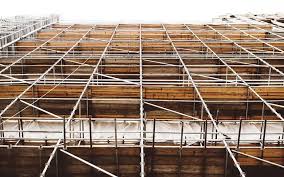Jul . 29, 2024 22:12 Back to list
Suppliers of Innovative Permanent Formwork Wall Systems for Construction and Building Projects
Understanding Permanent Formwork Wall Systems and Their Suppliers
In the realm of modern construction, efficiency and sustainability are paramount. One innovative solution that has gained traction in recent years is the use of permanent formwork wall systems. These systems not only reduce labor costs and construction time but also enhance building durability and energy efficiency. This article will delve into what permanent formwork wall systems are, their advantages, and key suppliers in the market.
What is Permanent Formwork?
Permanent formwork involves the use of reusable or non-removable mold structures that maintain their place within the building, forming an integral part of the wall assemblies. Typically made from materials such as concrete, polystyrene, or metal, these systems provide the necessary support for construction while simultaneously serving as insulation or aesthetic finishes. The formwork is left in place after the concrete has been poured, offering long-term stability and reducing the time and resources needed for traditional formwork setups.
Advantages of Permanent Formwork Wall Systems
1. Time Efficiency Traditional wall construction often involves multiple stages, including formwork setup, concrete pouring, and removal. Permanent formwork simplifies the process by allowing a one-step approach, significantly reducing construction time.
2. Cost-Effectiveness While the initial investment in permanent formwork may be higher than traditional materials, the overall cost savings over the project’s lifecycle are substantial. This includes reduced labor costs, less material waste, and lower maintenance expenses.
3. Increased Insulation Many permanent formwork systems incorporate insulating materials, providing superior thermal performance. This factor contributes to energy efficiency, reducing heating and cooling costs over the building's lifespan.
4. Sustainability Permanent formwork can be a more sustainable choice, as it often uses recycled or eco-friendly materials. By minimizing waste and enhancing energy efficiency, these systems contribute positively toward green building certifications.
5. Structural Integrity The robustness of materials used in permanent formwork ensures that buildings can withstand various environmental stresses. This is particularly beneficial in areas prone to extreme weather conditions.
permanent formwork wall system suppliers

Key Suppliers of Permanent Formwork Wall Systems
As the demand for permanent formwork systems grows, various suppliers have emerged, offering a range of products tailored to different construction needs. Here are some key players in the market
1. Monolithic System Technologies (MST) Specializing in insulated concrete forms (ICFs), MST provides permanent formwork solutions that offer significant energy savings while ensuring durability. Their products are designed to be user-friendly and adaptable to various construction designs.
2. Nudura Corporation Recognized for their innovative ICF technology, Nudura promotes building systems that enhance energy efficiency and build quality. Their permanent formwork products are widely used in residential, commercial, and industrial projects.
3. BuildBlock Building Systems BuildBlock offers a comprehensive range of insulated concrete forms that facilitate easier construction and provide excellent insulation. Their modular designs allow for greater flexibility in building designs.
4. AFS (Australian Formwork Systems) AFS provides a range of permanent formwork solutions, suitable for high rise and commercial applications. Their systems are designed to optimize construction efficiency while ensuring compliance with safety and environmental standards.
5. Durisol This company specializes in a unique formwork approach using a renewable resource – recycled wood and cement products. Durisol’s systems are particularly noted for their sound insulation properties, making them ideal for residential applications.
Conclusion
Permanent formwork wall systems are revolutionizing the construction industry by offering speed, efficiency, and sustainability. The growing number of suppliers in this sector reflects a shift towards more innovative construction techniques. As the industry continues to evolve, these systems are likely to play an increasingly prominent role in shaping the future of building design and construction. Choosing the right supplier is crucial for achieving the desired outcomes in project efficiency and sustainability, making it essential for architects and builders to stay informed about the latest developments and product offerings in this field.
-
High-Quality U Head Jack Scaffolding – Reliable Scaffolding Jack Head Manufacturer & Factory
NewsJul.08,2025
-
High-Quality I Beam H20 Leading Timber Beam H20 Material Factory, Exporters & Manufacturers
NewsJul.08,2025
-
High-Quality Powder Coating Steel Formwork - Durable & Corrosion Resistant Solutions
NewsJul.07,2025
-
Inclined Column Formwork Supplier – Durable & Precise Solutions for Unique Structures
NewsJul.07,2025
-
High-Quality Water Stop Solutions Trusted Water Stop Company & Suppliers
NewsJul.07,2025
-
High-Quality Formwork Material Supplier Reliable Manufacturer & Factory Solutions
NewsJul.06,2025